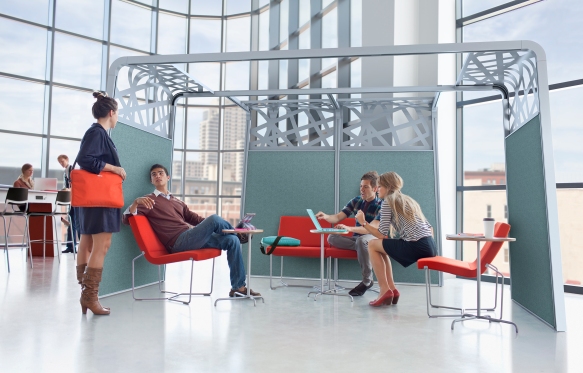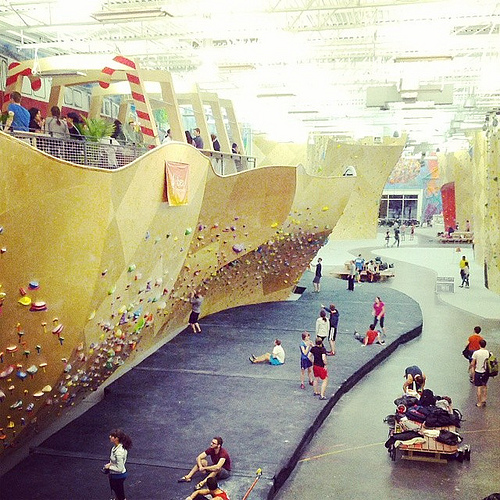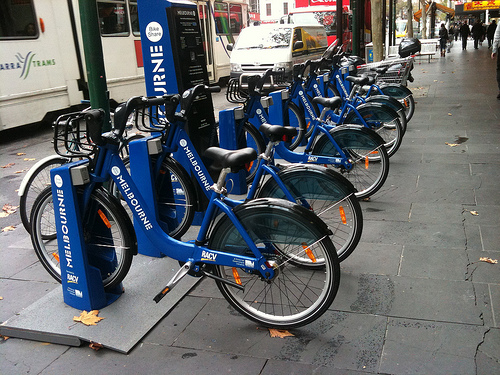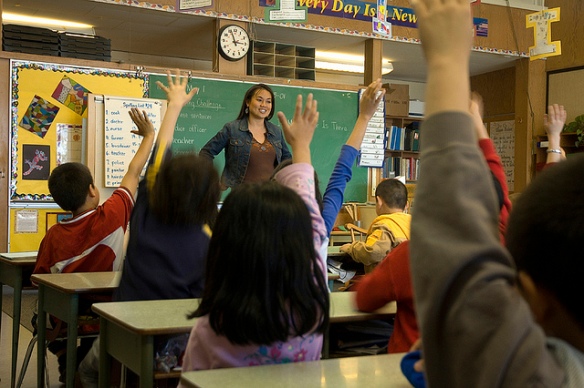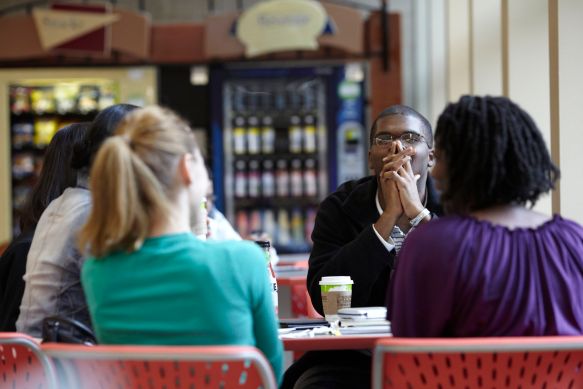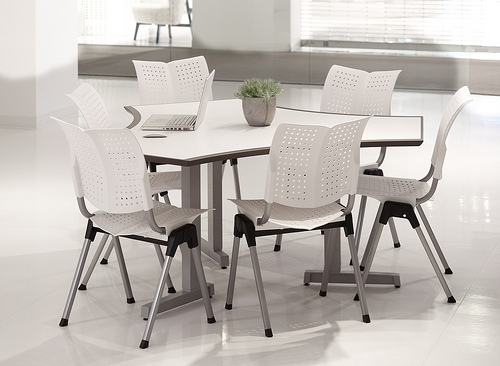This post is the second in a three-part series about changing perceptions around health and wellness in the U.S. The series will explore a variety of issues: How changing ideas about wellness are impacting the lifestyle choices of individuals (part 1), the design of our environments (part 2), and the development and design of products (part 3). We hope you’ll return in early February for the rest of the series and share your thoughts and ideas along the way!
* * * * *
Michelle Maloney heads to work each day prepared to work her body as well as her mind.
That’s not such a surprising thing, considering where Michelle works—at Human Kinetics, the leading publisher of information about physical activity.
“Working at Human Kinetics has had a huge influence on how I think of my health,” says Michelle (MS, MBA, CPT), an acquisitions editor who joined the company a decade ago.
The Human Kinetics headquarters, in Champaign, IL, has a fitness center with locker rooms, a cafeteria that offers healthy meal options, and a Wellness Committee responsible for planning lunch-and-learn sessions, fitness demonstrations, and an annual health fair. When the weather warms up, employees can hit the tennis and basketball courts or the walking trail that circles them.
But even companies that aren’t inherently focused on wellness are becoming more and more likely to do whatever they can to encourage a healthy corporate culture, Michelle says.
“There is definitely more of a focus on the links between behaviors and health. Employers are really starting to drive these changes. They have to—it’s a matter of costs.”
Most employers are well aware of the ways wellness impacts their bottom line. Not only do the expected negative costs of employee sick days and health insurance exist, but there’s a growing awareness of the fact that hiring people who are well in a holistic way can also yield positive results in terms of efficiency and innovation. A body that’s functioning properly—with optimum respiratory, circulatory, and digestive function—leads to a mind that functions at its best, according Barbara Hoogenboom a physical therapist and professor at Grand Valley State University (EdD, PT, SCS, ATC).
While it’s great for workplaces to include fitness facilities (or even climbing walls!) when they’re able, even the general design of work environments can play an essential role in encouraging movement throughout the day, says izzy+ founder Chuck Saylor.
“The workplace is no longer about sticking people in a cube, adding some lumbar support, and telling them to not move until lunch,” says Saylor. “Regular movement throughout the day is essential to wellbeing, and the best workplaces are making changes to encourage more movement.”
For instance, creating appealing second and third spaces—meeting areas and nooks furnished for comfort and productivity—compels people to get up and leave their desks for a refreshing change of scene, rather than staying in one place all day.
This approach to design—thinking about how design can best encourage people to move— has become so pervasive that it even has a name: Active Design. (Joan Blumenfeld of Perkins+Will, perhaps the leading expert in the field, has written extensively about Active Design, such as in this post.)
Designing cities that are more bikeable and walkable, and that offer more appealing public destinations, is also a part of this broad cultural movement. Working, living, and playing in environments that encourage us to move achieves what experts are now saying is essential to wellness: regular movement throughout our days. In other words, even a daily trip to the gym won’t do the trick on its own, as a recent Here & Now public radio report explains:
SACHA PFEIFFER: It seems like the reality here is that you can’t think of a certain part of your day as being your exercise time and then everything else being everything else. It has to be woven in more throughout.
ALLISON AUBREY: That’s right. Sort of a mindset shift, if you will. I mean, if you want to think about the practical advice for building in the daily activity, you’d think about things like, you know, instead of sending an email to that colleague, walk down the hall and talk to them.
As a matter of fact, Allison Aubrey’s example brings to mind yet another benefit to getting up and moving around the workplace: better communication and more collaboration with colleagues.
So are you feeling inspired to get moving? Great! We’d love to hear how you engineer more movement into your day.
.
Above: Climbing-wall-meets-coworking-space at Brooklyn Boulders Somerville (photo by aaditya bharadwaj)
Below: Bike-sharing programs in many cities encourage alternatives to the taxi or bus (photo by Jonny Brownbill)

